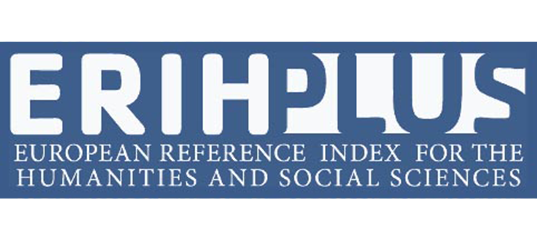Rapid ecological assessment for responsible mountain biking in the tropical dry forest, Guayaquil, Ecuador
DOI:
https://doi.org/10.46480/esj.5.3.139Keywords:
Protected area, Tumbes Region, Conservation, Biodiversity, Ecological samplingAbstract
Mountain biking is a common activity associated with the decrease in biodiversity in fragile ecosystems such as the tropical dry forest, where the Protective Forest “La Prosperina” is located on the coast of continental Ecuador. Little studied place despite the endemism of the Tumbes Region. The objective of this research was to determine the conservation status through a rapid ecological assessment to identify the impact of mountain biking. Geographic information systems and a multitemporal analysis were used. The routes represent a total area of 51,314.16 m2 with a load capacity of 7 cyclists per day, performing Enduro and X-C (cross country) types. In the questionnaire, proposals for participation in activities for the tours, cleaning and conservation were identified. Regarding the conservation of flora, Prestonia parvifolia is critically endangered and Croton rivinifolius is in danger of extinction. Two endangered birds were identified: the gray-backed hawk (Pseudastur occidentalis) and the gray-faced parakeet (Brotogeris pyrrhoptera), and a near-threatened species the red-faced parakeet (Psittacara erythrogenys). In this study, results that favour management for the protection of biodiversity are evidenced.
Downloads
References
Astudillo-Sánchez, E., Pérez, J., Troccoli, L., Aponte, H., & Tinoco, O. (2019). Flora leñosa del bosque de garúa de la cordillera Chongón Colonche, Santa Elena—Ecuador. Ecología Aplicada, 18(2), 155-169. https://doi.org/10.21704/rea.v18i2.1334
Ballantyne, M., Treby, D. L., Quarmby, J., & Pickering, C. M. (2016). Comparing the impacts of different types of recreational trails on grey box grassy-woodland vegetation: Lessons for conservation and management. Australian Journal of Botany, 64(3), 246-259. https://doi.org/10.1071/BT15239
Balmford, A., Green, J. M. H., Anderson, M., Beresford, J., Huang, C., Naidoo, R., Walpole, M., & Manica, A. (2015). Walk on the wild side: Estimating the global magnitude of visits to protected areas. PLOS Biology, 13(2), e1002074. https://doi.org/10.1371/journal.pbio.1002074
Barkman, J. J. (1989). A critical evaluation of minimum area concepts. Vegetatio, 85(1), 89-104. https://doi.org/10.1007/BF00042259
Barros, A., Gonnet, J., & Pickering, C. (2013). Impacts of informal trails on vegetation and soils in the highest protected area in the Southern Hemisphere. Journal of Environmental Management, 127, 50-60. https://doi.org/10.1016/j.jenvman.2013.04.030
Barros, A., & Marina Pickering, C. (2017). How networks of informal trails cause landscape level damage to vegetation. Environmental Management, 60(1), 57-68. https://doi.org/10.1007/s00267-017-0865-9
Ben-Moshe, N., & Iwamura, T. (2020). Shelter availability and human attitudes as drivers of rock hyrax (Procavia capensis) expansion along a rural-urban gradient. Ecology and Evolution, 10(9), 4044-4065. https://doi.org/10.1002/ece3.6174
Bie, K. de, & Vesk, P. A. (2014). Ecological indicators for assessing management effectiveness: A case study of horse riding in an Alpine National Park. Ecological Management & Restoration, 15(3), 215-221. https://doi.org/10.1111/emr.12127
Bötsch, Y., Gugelmann, S., Tablado, Z., & Jenni, L. (2018). Effect of human recreation on bird anti-predatory response. PeerJ, 6, e5093. https://doi.org/10.7717/peerj.5093
Bötsch, Y., Tablado, Z., & Jenni, L. (2017). Experimental evidence of human recreational disturbance effects on bird-territory establishment. Proceedings. Biological Sciences, 284(1858). https://doi.org/10.1098/rspb.2017.0846
Briceño, J., Iniguez-Gallardo, V., & Ravera, F. (2016). Factores que influyen en la apreciación de servicios eco-sistémicos de los bosques secos del sur del Ecuador. Revista Ecosistemas, 25(2), 46-58. https://doi.org/10.7818/re.2014.25-2.00
Espinosa, C. I., Cruz, M. de la, Jara‐Guerrero, A., Gusmán, E., & Escudero, A. (2016). The effects of individual tree species on species diversity in a tropical dry forest change throughout ontogeny. Ecography, 39(3), 329-337. https://doi.org/10.1111/ecog.01328
Espinosa, C. I., Cruz, M. de la, Luzuriaga, A. L., & Escudero, A. (2012). Bosques tropicales secos de la Región Pacífico Ecuatorial: Diversidad, estructura, funcionamiento e implicaciones para la conservación. Revista Ecosistemas, 21(1-2), 167-179. https://doi.org/10.7818/re.2014.21-1-2.00
Freile, J., & Restall, R. (2018). Birds of Ecuador. Bloomsbury Publishing.
Fuentes-Moreno, H., Trejo-Ortiz, A., & Cervantes, F. A. (2017). Los mamíferos del Área Reservada para la Recreación y Educación Ecológica San Juan del Monte, Las Vigas de Ramírez, Veracruz, México. Revista mexicana de biodiversidad, 88(4), 978-984. https://doi.org/10.1016/j.rmb.2017.10.031
Gentry, A. H. (1988). Changes in plant community diversity and floristic composition on environmental and geographical gradients. Annals of the Missouri Botanical Garden, 75(1), 1-34. JSTOR. https://doi.org/10.2307/2399464
Gurd, D. B., & Nudds, T. D. (1999). Insular biogeography of mammals in Canadian Parks: A re-analysis. Journal of Biogeography, 26(5), 973-982. https://doi.org/10.1046/j.1365-2699.1999.00334.x
Huhta, E., & Sulkava, P. (2014). The impact of nature-based tourism on bird communities: A case study in Pallas-Yllästunturi National Park. Environmental Management, 53(5), 1005-1014. https://doi.org/10.1007/s00267-014-0253-7
Jones, D. T., & Eggleton, P. (2000). Sampling termite assemblages in tropical forests: Testing a rapid biodiversity assessment protocol. Journal of Applied Ecology, 37(1), 191-203. https://doi.org/10.1046/j.1365-2664.2000.00464.x
Kangas, K., Luoto, M., Ihantola, A., Tomppo, E., & Siikamäki, P. (2010). Recreation-induced changes in boreal bird communities in protected areas. Ecological Applications: A Publication of the Ecological Society of America, 20(6), 1775-1786. https://doi.org/10.1890/09-0399.1
Kelly, C. L., Pickering, C. M., & Buckley, R. C. (2003). Impacts of tourism on threatened plant taxa and communities in Australia. Ecological Management & Restoration, 4(1), 37-44. https://doi.org/10.1046/j.1442-8903.2003.00136.x
Leal-Pinedo, J. M., & Linares-Palomino, R. (2005). The dry forests of the Biosphere Reserve of Northwestern (Peru): Tree diversity and conservation status. Caldasia, 27(2), 195-211. JSTOR.
León-Yánez, S., Valencia, R., Pitman, N., Endara, L., Ulloa Ulloa, C., & Navarrete, H. (2011). Libro rojo de las plantas endémicas del Ecuador (2 edición). Publicaciones del Herbario QCA, Pontificia Universidad Católica del Ecuador.
Leopold, L. B., Clarke, F. E., Hanshaw, B. B., & Balsley, J. R. (1971). A procedure for evaluating environmental impact. https://doi.org/10.3133/cir645
Lowry, H., Lill, A., & Wong, B. B. M. (2013). Behavioural responses of wildlife to urban environments. Biological Reviews of the Cambridge Philosophical Society, 88(3), 537-549. https://doi.org/10.1111/brv.12012
Medeiros, H. R., & Torezan, J. M. (2013). Evaluating the ecological integrity of Atlantic forest remnants by using rapid ecological assessment. Environmental Monitoring and Assessment, 185(5), 4373-4382. https://doi.org/10.1007/s10661-012-2875-7
Monz, C. A., Cole, D. N., Leung, Y.-F., & Marion, J. L. (2010). Sustaining visitor use in protected areas: Future opportunities in recreation ecology research based on the USA Experience. Environmental Management, 45(3), 551-562. https://doi.org/10.1007/s00267-009-9406-5
Niu, L., & Cheng, Z. (2019). Impact of tourism disturbance on forest vegetation in Wutai Mountain, China. Environmental Monitoring and Assessment, 191(2), 81. https://doi.org/10.1007/s10661-019-7218-5
Perry, G. H. (2020). How human behavior can impact the evolution of genetically-mediated behavior in wild non-human species. Journal of Comparative Physiology. A, Neuroethology, Sensory, Neural, and Behavioral Physiology, 206(3), 337-342. https://doi.org/10.1007/s00359-020-01415-9
Pickering, C. M., & Hill, W. (2007). Impacts of recreation and tourism on plant biodiversity and vegetation in protected areas in Australia. Journal of Environmental Management, 85(4), 791-800. https://doi.org/10.1016/j.jenvman.2006.11.021
Pickering, C. M., Hill, W., Newsome, D., & Leung, Y.-F. (2010). Comparing hiking, mountain biking and horse riding impacts on vegetation and soils in Australia and the United States of America. Journal of Environmental Management, 91(3), 551-562. https://doi.org/10.1016/j.jenvman.2009.09.025
Pickering, C. M., Rossi, S., & Barros, A. (2011). Assessing the impacts of mountain biking and hiking on subalpine grassland in Australia using an experimental protocol. Journal of Environmental Management, 92(12), 3049-3057. https://doi.org/10.1016/j.jenvman.2011.07.016
Rayner, L., Lindenmayer, D. B., Wood, J. T., Gibbons, P., & Manning, A. D. (2014). Are protected areas maintaining bird diversity? Ecography, 37(1), 43-53. https://doi.org/10.1111/j.1600-0587.2013.00388.x
Ridgely, R. S., & Greenfield, P. J. (2006). Aves del Ecuador: Guía de campo. Fundación de Conservación Jocotoco.
Rogala, J. K., Hebblewhite, M., Whittington, J., White, C. A., Coleshill, J., & Musiani, M. (2011). Human activity differentially redistributes large mammals in the Canadian Rockies National Parks. Ecology and Society, 16(3). JSTOR. https://www.jstor.org/stable/26268938
Sobrevila, C., & Bath, P. (1992). Evaluación ecológica rápida: Un manual para usuarios de América Latina y el Caribe. The Nature Conservancy.
Sornoza-Quijije, L., Vera-Morales, M., & Pino-Acosta, A. (2021). Teaching natural sciences for children with field trips and mobile. En Á. Rocha, C. Ferrás, P. C. López-López, & T. Guarda (Eds.), Information Technology and Systems (pp. 321-329). Springer International Publishing. https://doi.org/10.1007/978-3-030-68418-1_31
Sutula, M. A., Stein, E. D., Collins, J. N., Fetscher, A. E., & Clark, R. (2006). A practical guide for the development of a wetland assessment method: The California experience. JAWRA Journal of the American Water Resources Association, 42(1), 157-175. https://doi.org/10.1111/j.1752-1688.2006.tb03831.x
Thompson, B. (2015). Recreational trails reduce the density of ground-dwelling birds in protected areas. Environmental Management, 55(5), 1181-1190. https://doi.org/10.1007/s00267-015-0458-4
Toews, M., Juanes, F., & Burton, A. C. (2018). Mammal responses to the human footprint vary across species and stressors. Journal of Environmental Management, 217, 690-699. https://doi.org/10.1016/j.jenvman.2018.04.009
Törn, A., Tolvanen, A., Norokorpi, Y., Tervo, R., & Siikamäki, P. (2009). Comparing the impacts of hiking, skiing and horse riding on trail and vegetation in different types of forest. Journal of Environmental Management, 90(3), 1427-1434. https://doi.org/10.1016/j.jenvman.2008.08.014
UICN. (2020). Unión Internacional para la Conservación Naturaleza. Recuperado de: https://www.iucnredlist.org/en
Valverde, F. de M. (1967). Fanerogamas de la zona de Guayaquil. Editorial de la Universidad Central.
Valverde, F. de M., & Pérez, J. J. (2012). La biodiversidad vegetal, como capital natural de la sostenibilidad en la costa ecuatoriana (1 ed). M. I. Municipalidad de Santiago de Guayaquil.
Vázquez-Reyes, L., Jiménez-Arcos, V., SantaCruz-Padilla, S., García-Aguilera, R., Aguirre-Romero, A., Arizmendi, M. del C., & Navarro-Sigüenza, A. (2018). Aves del Alto Balsas de Guerrero: Diversidad e identidad ecológica de una región prioritaria para la conservación. Revista Mexicana de Biodiversidad, 89(3), 873-897.
Walden-Schreiner, C., Leung, Y.-F., Kuhn, T., Newburger, T., & Tsai, W.-L. (2017). Environmental and managerial factors associated with pack stock distribution in high elevation meadows: Case study from Yosemite National Park. Journal of Environmental Management, 193, 52-63. https://doi.org/10.1016/j.jenvman.2017.01.076
Published
Issue
Section
License
Authors retain the copyright of their articles and are therefore free to share, copy, distribute, perform, and publicly communicate their work on their personal websites or in institutional repositories after its publication in this journal, provided that full bibliographic information is given to acknowledge its original publication.































